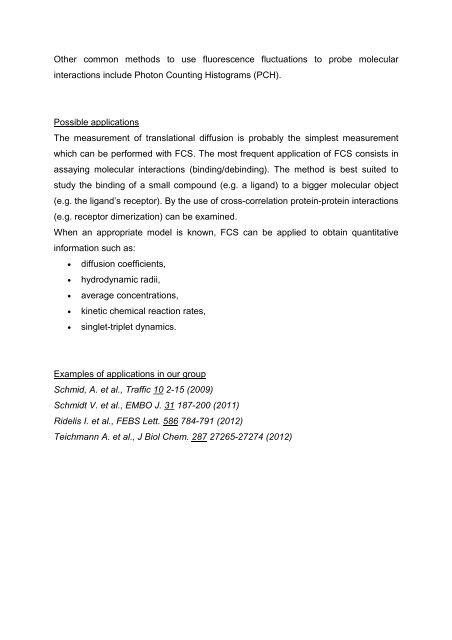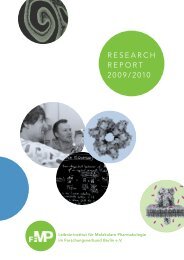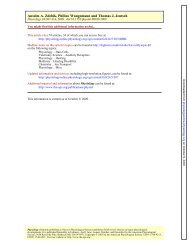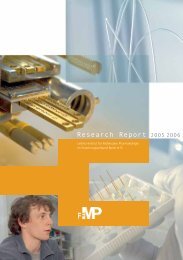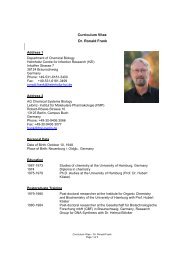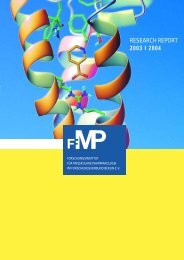FCS - Fluorescence Correlation Spectroscopy - FMP
FCS - Fluorescence Correlation Spectroscopy - FMP
FCS - Fluorescence Correlation Spectroscopy - FMP
Create successful ePaper yourself
Turn your PDF publications into a flip-book with our unique Google optimized e-Paper software.
Other common methods to use fluorescence fluctuations to probe molecular<br />
interactions include Photon Counting Histograms (PCH).<br />
Possible applications<br />
The measurement of translational diffusion is probably the simplest measurement<br />
which can be performed with <strong>FCS</strong>. The most frequent application of <strong>FCS</strong> consists in<br />
assaying molecular interactions (binding/debinding). The method is best suited to<br />
study the binding of a small compound (e.g. a ligand) to a bigger molecular object<br />
(e.g. the ligand’s receptor). By the use of cross-correlation protein-protein interactions<br />
(e.g. receptor dimerization) can be examined.<br />
When an appropriate model is known, <strong>FCS</strong> can be applied to obtain quantitative<br />
information such as:<br />
• diffusion coefficients,<br />
• hydrodynamic radii,<br />
• average concentrations,<br />
• kinetic chemical reaction rates,<br />
• singlet-triplet dynamics.<br />
Examples of applications in our group<br />
Schmid, A. et al., Traffic 10 2-15 (2009)<br />
Schmidt V. et al., EMBO J. 31 187-200 (2011)<br />
Ridelis I. et al., FEBS Lett. 586 784-791 (2012)<br />
Teichmann A. et al., J Biol Chem. 287 27265-27274 (2012)


